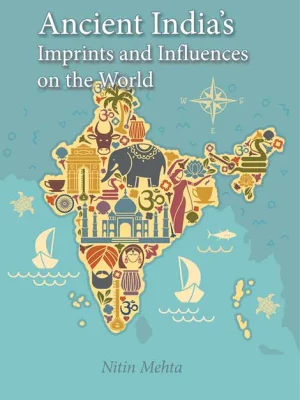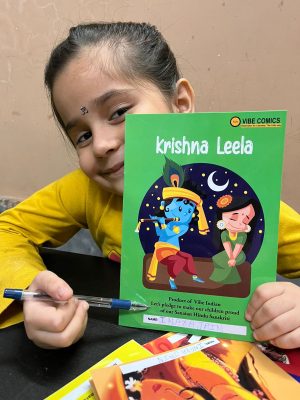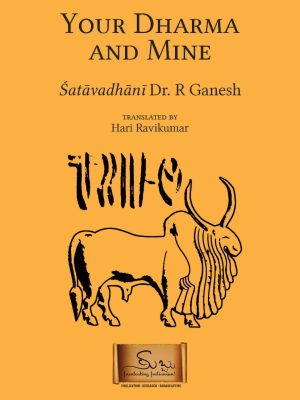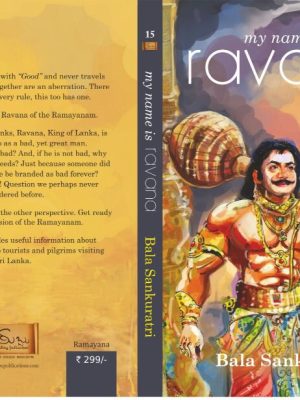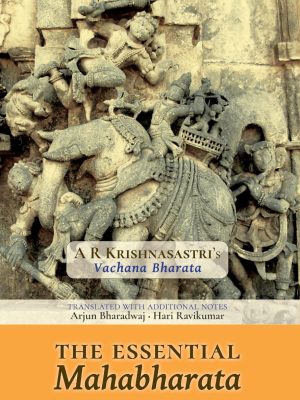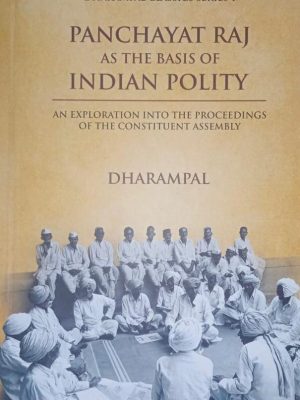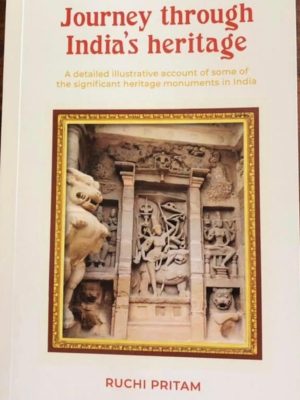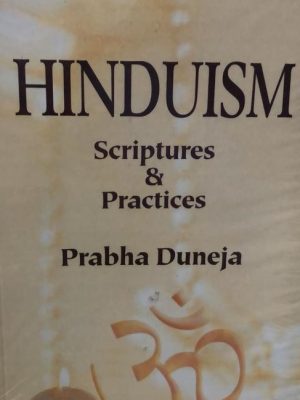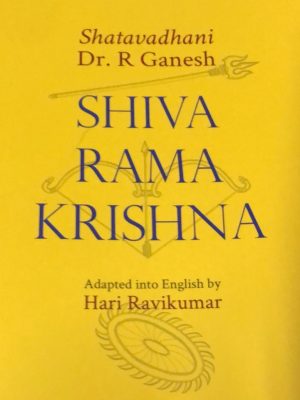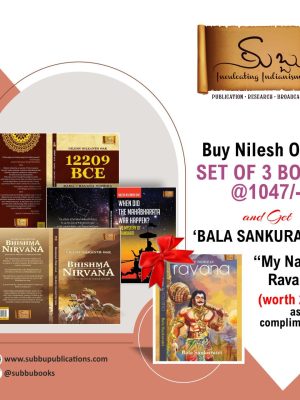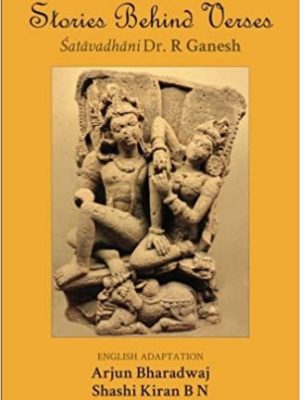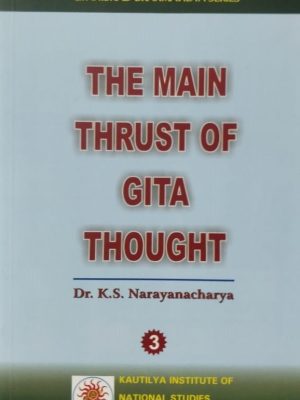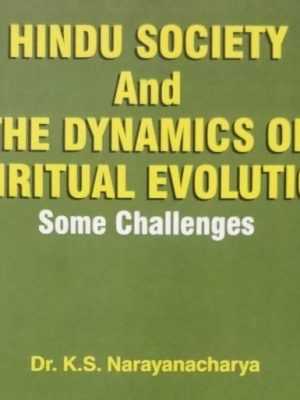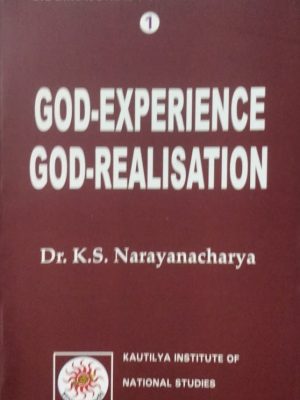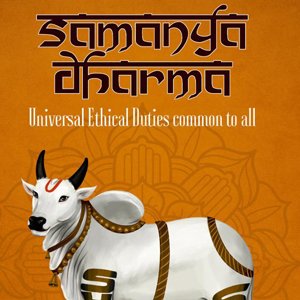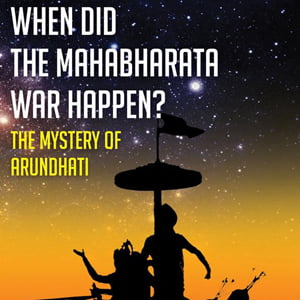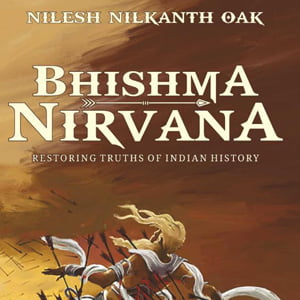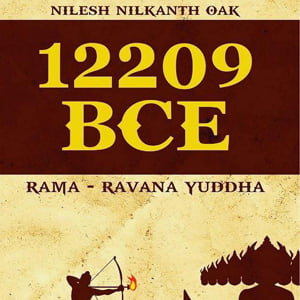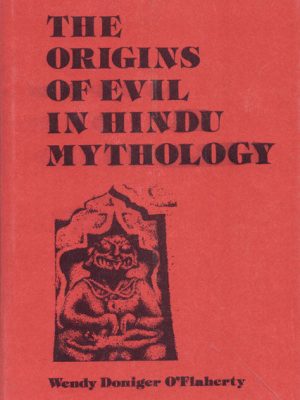Featured Books
Featured books are a collection of books that talk about lesser-known facts of Hinduism like The Origins of Evil in Hindu Mythology, Gods Beyond Temples, and also books like Rigvedasukta Vikas.
-
A Textbook on Panchakarma
The present book on Panchakarma promises the students complete information regarding Panchakarma from various classics of Ayurveda. The book has critically reviewed almost all the topics related to Panchakarma. This book helps in a precise and deeper understanding of principles and concepts along with hidden meanings related to Panchakarma. It is especially useful for BAMS students, M.D scholars.
₹395.00₹425.00A Textbook on Panchakarma
₹395.00₹425.00 -
Ancient India’s Imprints and Influences on the World
- ISBN Hardcover: 9789391024949, 9391024947
- ISBN Paperback: 9789391024475, 9391024475
- Year of Publication: 1994
- Edition: 1st Edition
- No. of Pages: 140
- Language: English
- Publisher: Motilal Banarsidass Publishing House
₹395.00 – ₹695.00Ancient India’s Imprints and Influences on the World
₹395.00 – ₹695.00 -
Vibe Comics for children (2-8 years) in English | 7 comics set
Let’s pledge to make our children proud of our Sanatan Hindu Sanskriti
VIBE COMICS- Destination for Learners- the Indic way is a product of Vibe Indian for children 2-8 years old children. The comics cover the following topics:
1. My Friend Ganesha
2. Ravan’s biggest mistake
3. Devi Sita- the allrounder
4. Krishna Leela
5. Devi Kali- the only hope
6. Shiva- the unconditional lover
7. Hanuman – the universal hero
₹350.00 -
Your Dharma & Mine
What is dharma? Why is this idea hailed as the greatest philosophical concept of India? What aspects of this dharma apply to everyone?
Through the course of this book, Dr.Ganesh describes how dharma provides us with a perspective to appreciate the best in any religious or secular value system across time and place. It is the universal set that encompasses the greatest teachings of all possible philosophies.
By the end ,the reader will become aware of the magnanimity and magnificence of the ancient Indian way of thinking and will agree with the great seer Manu when he writes.
“Among all dharma’s,
the greatest is self knowledge.
It leads to immortality. ”
– Manu-smrti 12.85₹171.35Your Dharma & Mine
₹171.35 -
My Name Is Ravana
The Ramayana has been written, discussed narrated and filmed from Sri Rama’s perspective. The otherside of it, Ravana’s angle is equally soothing and has abundant lessons to give, just that not many got the opportunity to explore this version.
My Name Is Ravana retells episodes from the Ramayana from Jaya’s view who came onto the earth as Ravana. He narrates his experiences on this planet during Treta Yuga and discusses the very purpose of his arrival on to this earth.
Get ready for the untold version of Ramayana !₹286.35My Name Is Ravana
₹286.35 -
The Essential Mahabharata
Prof A R KrishnaSastri’s classic “Vachana Bharatha” is a high resolution photograph of the timeless epic that captures its creamiest essence in sculpted Kannada prose. It has been a perennial favourite with Kannadigas since it first came out in 1950. Neither before nor after has such a succinct yet rich – in details abridgement of the world’s grandest epic been published in any language.
The Essential Mahabharata is an authentic English translation by Arjun Bharadwaj & Hari RaviKumar, life long students of Bharatha & The Bharatha
For anyone who wishes to catch a glimpse of India and savour the essence of the Mahabharatha , this book is a must read!₹517.50The Essential Mahabharata
₹517.50 -
Dharampalji’s Set of 5 Books
Cost for the set Rs. 1225/- FREE SHIPPING Anywhere in India.
Panchayat Raj As The Basis of Indian Polity
Indian Science And Technology In The Eighteenth Century
Civil Disobedience And Indian Tradition
The Beautiful Tree
Bharatiya Chitta Manas And Kala₹1,408.75Dharampalji’s Set of 5 Books
₹1,408.75 -
-
-
Shiva Rama Krishna
Shiva-Rama-Krishna is an English adaptation of Śatāvadhāni Dr. R Ganesh’s popular lecture series on the three great heroes of our tradition. This work focuses on the human values that we can learn from the lives of Shiva, Rama, and Krishna.
₹113.85Shiva Rama Krishna
₹113.85 -
Nilesh Oak – Combo Offer @1047/- and get “My Name is Ravana” as complimentary
Get “My Name is Ravana” by Bala Sankuratri worth 299/- as complimentary!
₹1,204.05 -
Stories Behind Verses
Stories Behind Verses is a remarkable collection of over a hundred anecdotes, each of which captures a story behind the composition of a Sanskrit verse. Collected over several years from various sources with tireless effort by Śatāvadhāni Dr. R Ganesh, these stories took the shape of the Kannada book Kavitegondu Kathe. When this was published in 1996, it was a first of its kind. It gained wide popularity among the critics and the laity not only for its riveting episodes but also for its mellifluous writing.
This book is an English adaptation of Kavitegondu Kathe by Arjun Bharadwaj and Shashi Kiran B N, who have captured the original in both letter and spirit. Witty, romantic, melancholic, provocative, poignant, and profound by turns, Stories Behind Verses will tug your tendermost strings of feeling and stir your emotions.₹287.50Stories Behind Verses
₹287.50 -
-
-
Samanya Dharma
The book addresses a much- needed but often taken for granted topic within the Hindu tradition- namely the timeless salience of universal values and attitudes for righteous living. It is a compendium of what constitutes universal values carefully culled from primary and secondary sources. The book bridges the past and present by reinforcing the relevance of Samanya Dharma in contemporary times.
₹111.55Samanya Dharma
₹111.55 -
When Did The Mahabharata War Happen
The Mystery of Arundhati
The Mahabharata text contains the history of one of the key events of Indian civilization, viz. The Mahabharata War. The text is a rich depository of customs and culture, science and philosophy of the Mahabharata era. The Mahabharata is the longest epic poem known and consists of over 100,000 shloka and is roughly ten times the length of the Iliad and the Odyssey combined. The Indian tradition calls the text the Pancham (fifth) veda.
It is then natural that numerous attempts have been made to date the events of the Mahabharata war. There are more than 125+ claims, by those many different researchers, for the timing of the Mahabharata war. Unfortunately, majority of these claims are based on either selective evidence or dogmas of AIT/Kaliyuga and show characteristics lack of scientific acumen and logical reasoning. This is precisely the reason why researchers have ended up with 125+ different claims while simultaneously claiming to have employed identical evidence.
What could be the outcome if one can employ all the evidence of the Mahabharata text and test it objectively with the help of science? Is it even possible to accomplish such a thing and arrive at a unified answer?
Nilesh Oak enumerated 215+ specific astronomy and associated observations from the Mahabharata text and tested them with the scientific acumen and logical reasoning to arrive at 5561 BCE as the year of the Mahabharata war.
The book explores unique astronomy observations from the Mahabharata text that decisively falsify 96%+ of all existing claims for the year of the Mahabharata War.₹361.10 -
Bhishma Nirvana
The book ‘When did the Mahabharata war Happen?: The Mystery of Arundhati’ decisively falsified all claims for the Mahabharata war that claimed the year of the Mahabharata war after 4508 BCE. Objective testing of the astronomy evidence (215+), internal to the Mahabharata text, led to 5561 BCE as the year of the Mahabharata war. Arundhati-Vasistha (AV) observation was decisive in falsification of 96%+ of the existing claims for the year of the Mahabharata war.
Many Indic researchers, lacking scientific acumen, comprehension, and logical reasoning skills, thought, incorrectly, that AV observation was the only observation that led to the falsification of all claims that fell after 4508 BCE. Naturally, they made illogical, dogmatic, evasive, digressive attacks on the validity of the inference due to AV observation. Their attempts to discredit AV observation backfired and rather led to further strengthening of AV observation and its importance for the validity of 5561 BCE as the year of the Mahabharata war. In their dogmatic zeal, these researchers even questioned the Mahabharata evidence itself that asserted the duration of Bhishma on the bed of arrows for more than 92 days.
What these researchers did not realize is that the very details of Bhishma Nirvana provide evidence that not only corroborates inference of AV observation but also strengthens 5561 BCE as the year of the Mahabharata war.
In this book, Nilesh Oak employs 300+ specific astronomy and associated observations from the Mahabharata text and tested them with the scientific acumen and logical reasoning to arrive at 5561 BCE as the year of the Mahabharata war. The book describes evidence that asserts the impossibility of the Mahabharata war anytime after 4700 BCE (Bhishma Nirvana + Lunar calendar evidence), or 5125 BCE (sensitivity analysis). The evidence presented in this book decisively falsifies all alternate claims for the year of the Mahabharata War.₹361.10Bhishma Nirvana
₹361.10 -
12209 BCE Rama Ravana Yuddha
Rama Ravana Yuddha
Valmiki Ramayana contains the history of one of the key events of Indian civilization, viz. The Rama-Ravana Yuddha. The Ramayana consists of nearly 24,000 Shloka, divided into seven Kandas and about 500 Sargas. Valmiki Ramayana has the status of the adi-kavya (first poem).
There are 15+ attempts to date the events of Ramayana. Unfortunately, the majority of these claims are based on either selective evidence or dogmas of AIT/Chatur-Yuga cycles and show characteristics lack of scientific acumen and logical reasoning. This is precisely the reason why researchers have ended up with multiple claims while simultaneously claiming to have employed identical evidence.
What could be the outcome if one can employ all the evidence of the Valmiki Ramayana and test it objectively with the help of science? Is it even possible to accomplish such a thing and arrive at a unified answer?
Nilesh Oak enumerated 575+ specific astronomy and associated observations from Valmiki Ramayana and tested them with the scientific acumen and logical reasoning to arrive at 12209 BCE as the year of the Rama-Ravana Yuddha. The book explores unique astronomy observations from Valmiki Ramayana that decisively falsify all existing claims for the year of the Rama-Ravana Yuddha, and thus the timing of Ramayana.₹361.1012209 BCE Rama Ravana Yuddha
₹361.10 -
The Origins of Evil in Hindu Mythology
The Origins of Evil in Hindu Mythology
James Austin’s insights into the fundamental connections that exist between Zen Buddhism and brain science are continued in this volume, which is a follow-up to his extremely popular book Zen and the Brain. In Zen-Brain Reflections, Austin, a clinical neurologist, researcher, and Zen practitioner, investigates the growing psychological processes and brain alterations connected with the path of long-range contemplative training. Austin is also a researcher at the University of California, San Francisco. Not only does Austin draw from the most recent findings in neuroscience and new neuroimaging investigations, but he also pulls from Zen literature and his own experience with different states of consciousness. This book picks up exactly where the last one left off. Zen-Brain Reflections. It provides answers to issues such as “how exactly do placebos and acupuncture impact the brain?” Can scientists using neuroimaging pinpoint the locations in our brains where our concepts of self first take shape? How can the most cutting-edge brain imaging techniques be used to better effectively monitor meditators? How is it that extensive amounts of time spent meditating, along with fleeting experiences of enlightenment, may bring about fundamental changes in the physiological makeup of the brain? In a number of the chapters, there are theories that may be tested that indicate methods to associate normal brain processes and the practise of meditation with the occurrence of unusual states of consciousness. After making a quick introduction to the subject of Zen and discussing the most current findings from research into meditation, Austin discusses the most recent findings from research on the amygdala, frontotemporal connections, and paralimbic extensions of the limbic system. After that, he investigates the many states of consciousness, from the earliest, most shallow absorptions to the latter, most significant “peak experiences.” This discussion starts with the states known as kensho and satori and includes an updated study of the many ways in which these states convey “oneness.” He refers beyond the even more advanced phases toward that uncommon continuing degree of enlightenment that is characterised by the manifestation of “sage wisdom.” Last but not least, in
Author
W.D. O’Flaherty
₹850.00

